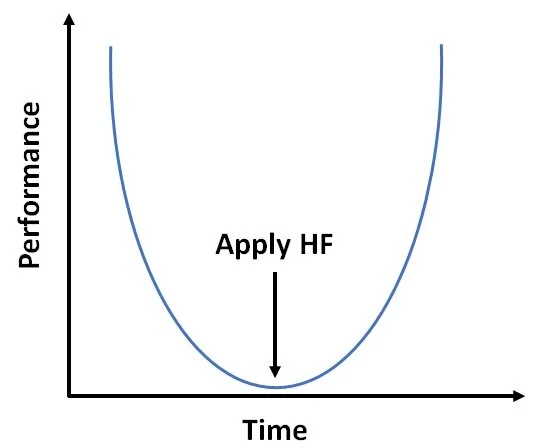Human Factors
The performance potential is high at time zero. As time elapses, the performance potential decreases due to innate human characteristics. The application of human factors or HF as seen in the graph, facilitates the restoration of that performance potential.
Applying human factors…
Human factors (HF) has a very objective definition with regard to how it is put into practice, but in a nutshell, human factors addresses the psychological and physiological characteristics of a human being. These characteristics are modulated by the human’s interaction with the environment (e.g., an office, a home, a park, a car…etc.) with which they are placed. In essence, the human will adapt or exploit the environment based on what the environment affords. Traditionally, human factors is used in the design of products, processes, and systems, with the human as the central point of all the animate and inanimate objects encompassed by the design. At Tantalum we focus on the environmental affordances and how such affordances modulate human interaction negatively or positively. From that perspective, human factors becomes a tool that can be applied in any situation that involves a human being.
The Venn diagram captures the fours principles of economics and two additional modulators. These principles are the foundation of how economists manage decisions of the economy writ large. The four principles are so fundamental that they can be applied to how humans make individual decisions. However, as fundamental as these principles are, they are modulated by environmental affordance and organization that humans interact with in a civilized society. Environmental affordance has already been discussed earlier on this page. Organization can be governments (local and federal), employers, shopping centers, places of worship…etc. Further, the dashed line around the organizations circle is there because the coupling effect is not as profound as the environmental affordance circle. Once you combine the four economic principles with organization and environmental affordance a recipe for how humans can use the four economic principles to make decisions becomes more suitable.

